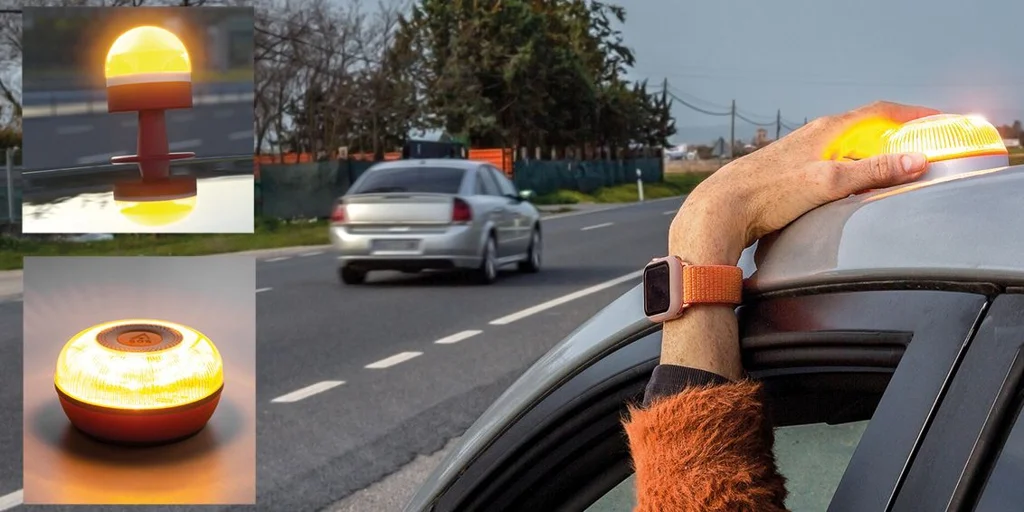
V16 is a pre-accident signal device that replaces the classic triangle to indicate that the vehicle is stuck on the road or that a load has fallen on the vehicle.
Directorate General of Transport (DGT) is established … In March 2021, the traditional emergency triangle will be replaced with a connected V-16 light beacon. It is a small yellow beacon with connectivity that can emit high-intensity 360-degree light intermittently and continuously for at least 30 minutes. Contains a cell or battery, whether rechargeable or not, with a useful life of at least 18 months.
This device, which transmits the vehicle’s location in real time to the DGT 3.0 platform, will be the only system authorized to signal breakdowns and accidents on Spanish roads from January 1, 2026.
With only days left until the legal deadline expires, consulting firm Impulso by PONS has published a report warning of the legal risks in five areas of civil, administrative, criminal, insurance and industrial that could arise from non-compliance with this new legal obligation.
Given that there are more than 34 million insured vehicles in Spain (according to FIVA), the entry into force of Connected V-16 represents a “paradigm change in Spanish road safety.” Ignorance or non-compliance with this regulation can have serious consequences for drivers, owners, and manufacturers, especially in terms of the legal risks of non-compliance with V-16s.
In the area of civil liability, drivers may be held directly responsible for damage caused to third parties due to lack of signage or visibility, which may result in legal claims and liability to pay compensation.
In the field of insurance, insurance companies have the power to exclude compensation in cases of gross negligence. If the lack of signaling is proven to have been a violation, the insurance company can file a claim for damages and recover from the insured the amount already paid to the victim.
From a criminal perspective, if the omission of a sign directly caused injury or death, it could be classified as gross recklessness, and the driver could face jail time and loss of driving privileges.
In the administrative field, the dual liability of the owner who fails to provide and maintain the obligatory beacon in his vehicle and the driver who does not use it correctly results in fines ranging from 80 to 200 euros.
Finally, manufacturers, laboratories and importers who fail to comply with the Labor Safety Act 21/1992 when producing the V-16 may be subject to fines ranging from €60,000 to €100 million, as well as suspension or closure of their commercial activities for up to five years.
Additionally, PONS’ Impulso report highlights that drivers lose the presumption of good faith if they operate equipment, purchase non-certified models, or skip basic vehicle safety inspections. Such a situation could complicate legal defense and exacerbate liability in judicial or administrative proceedings.
The report concludes that in a country with millions of vehicles, “compliance with regulations is not only a matter of legal responsibility, but also a matter of commitment to the safety of all road users. The entry into force of the V16 connection signal is not only a milestone in road safety in Spain, but also a great responsibility for the owners of the more than 34 million vehicles that circulate on our roads today.”



